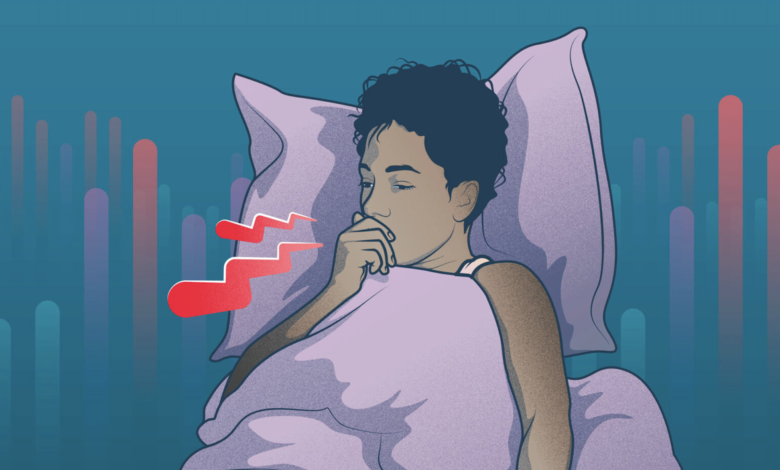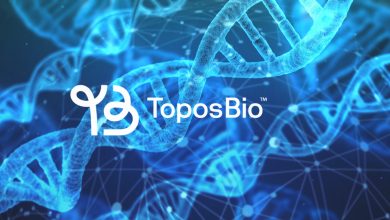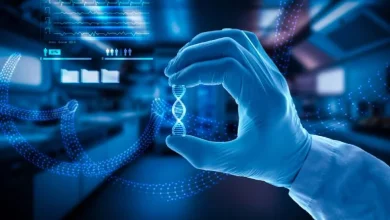
Advanced AI-driven technology is now being incorporated into nightly routines, and with it, the stage has been set to change how we monitor the spread of illnesses over the next decade. This underscores the huge potential for how integrating AI into everyday life, even during sleep, is contributing to a major evolution of how we track and improve people’s health. And with humans spending a significant portion of their lives asleep, the potential for AI to monitor people’s health while they slumber is both innovative and promising.
By bringing AI to bed with you through sleep tracking and analysis apps, algorithms can run in the background on people’s phones, allowing users to gain unprecedented access to advanced health monitoring – all without needing any extra gadgets. This integration transforms bedrooms into hubs of proactive healthcare monitoring, where AI quietly works in the background analyzing data and providing personalized insights that can enhance well-being. As individuals rest, AI algorithms diligently detect early signs of illness, such as coughing, offering a layer of health tracking that extends beyond waking hours.
Aside from enhancing individual health and sleep quality, AI-powered sleep analysis tools have far-reaching implications for public health. By analyzing patterns in sleep disturbances like coughing, movement, snoring, and breathing, AI can detect early signs of illness before users are even aware they are sick, offering a powerful tool for tracking and mitigating the spread of diseases on a broader scale.
Utilizing the Data at Hand
By tracking these sleep events, it provides us with new data at our fingertips each night and on a worldwide scale. This data allows us to form a global sensor network, operating in real-time, 24 hours a day, providing us with a constant influx of sleep data. This global scale offers a unique advantage, supplemented by localized information. While the exact positioning of people using the sleep analysis app remains anonymized, approximate positions for each sensor node are maintained.
We were inspired to start tracking coughing more seriously with the onset of the pandemic. Recognizing the existing capability to detect coughs through sleep analysis, this project was started, however, it took considerable time to accumulate sufficient data before we could actively implement it. The challenge lay not only in visualization of the data but also in the complex mathematical computations required to ensure the anonymization of the data.
Leveraging this vast data set we are now able to track nightly events on a personal level (i.e. coughing) compared to others in their local area and therefore can track the spread of illness extensively.
The Power of AI in Illness Detection and Prevention
The core mechanics of this AI technology begin with unobtrusive audio event detection conducted on users’ smartphones. Leveraging advanced neural networks trained on diverse datasets, including user annotations, the technology adeptly discerns coughing events during sleep. Through sophisticated analysis, the system computes cough frequencies and duration, which are then anonymized and aggregated globally for further analysis.
The predictive capabilities allow us to better forecast potential outbreaks of illnesses like COVID-19 or influenza, often weeks before conventional healthcare systems detect them through traditional inpatient testing. When we see that coughing events increase significantly in a certain geographic area, it is a big indicator and predictor of illness spreading. This early warning capability stems from the unique nature of nocturnal coughing, serving as a precursor to symptomatic awareness and clinical reporting. By modeling cough distributions at a regional level, the AI can discern anomalies, alerting users to heightened risks proactively.
While this technology excels in cough detection, it’s essential to clarify its purpose. It predicts coughing events, not specific illnesses. This focus on cough dictation offers a distinct advantage over other methods, like Google’s influenza warnings, which rely only on search data instead of biological indicators. That’s why this biological signal-based approach provides higher accuracy and reliability in detecting coughs and illness, laying the groundwork for future advancements in monitoring the health of populations.
Think about the power this gives people to make better decisions about limiting risk and exposure to sickness. For instance, if there is an upcoming large group activity and a user sees that coughing is more elevated than normal in their area, they may consider attending an event virtually rather than in person. This will give people the information they need to better protect themselves and further prevent the spread of sickness, empowering them to take charge of their health. This could be especially helpful for immunocompromised individuals or other high-risk individuals to greatly reduce their risk of illness by reducing their exposure to others when increased coughing events are detected.
With this in mind, you can start to envision how monitoring our sleep holds the immense potential for early detection and prevention of various illnesses. With AI monitoring seamlessly integrated into devices that nearly everyone has – a cell phone – bedrooms can transform into centers for proactive healthcare.
What’s Next
In the years to come, AI is expected to play an increasingly significant role in overall health, particularly in terms of personalization. AI will be able to aid the healthcare system by providing more granular insights to medical professionals, enabling them to better understand and address patients’ health needs.
Currently, the primary focus is on gathering and tracking data, whether it’s user input or various physiological metrics like heart rate variability or breathing patterns. This foundational stage is crucial for building reliable datasets that serve as the basis for the next phase of health tracking and analysis.
The next phase involves leveraging AI to empower users to achieve their health and fitness goals actively. For instance, imagine someone training for a marathon. Rather than merely presenting a plethora of data, the future of AI-driven health monitoring lies in providing actionable insights tailored to individual objectives. This could involve employing techniques from reinforcement learning, where algorithms analyze vast datasets to offer personalized coaching or recommendations for improvement.
AI also holds the potential to revolutionize healthcare by detecting anomalies or patterns indicative of underlying health issues. It’s not just about flagging elevated biological markers but rather synthesizing data from multiple modalities to identify concerning trends. By integrating information from various sources, AI can alert users to potential health risks and prompt timely medical intervention when necessary. This holistic approach to health monitoring represents a shift towards proactive and personalized healthcare management.
Working Toward a Healthier Tomorrow
AI’s integration into personal devices marks a significant milestone in health management. By leveraging its capabilities, individuals can be empowered to make informed decisions about their health, leading to improved outcomes and a higher quality of life.
As we go forward, let’s embrace AI’s potential to drive positive change and usher in a future where healthcare is not just reactive, but proactive. Don’t hesitate to invite AI into your daily routine, even into your bedroom, and take advantage of the positive impacts it can have on your well-being.




